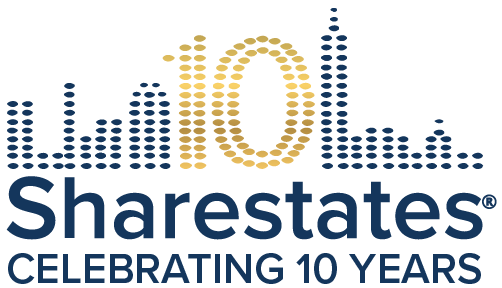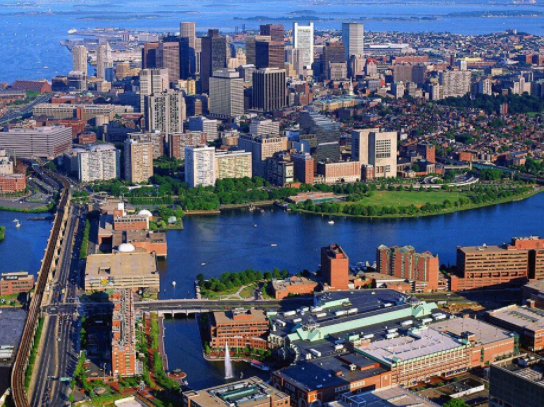Massachusetts
Massachusetts and the broader Boston-metro area were hot before the pandemic, and COVID has only exacerbated that demand. The median price of a single-family in the state is almost double that of the national average at ~11.3%, but sales are only up ~1.5% from 2019 (The Warren Group). Even with higher inventory available in Boston proper, Boston is expected to see sale prices increase ~5.7% (Boston Globe), partly because, as a “smaller city,” Boston has not seen the numbers of people leaving as compared with other New England counterparts (Boston Magazine). As such, the magazine predicts a larger return to the city than its peers. One major caveat for the Boston area is the affordability crunch, as an already-expensive market will get even more expensive, further compounding the ability of millennials to get into the market.
Connecticut
Connecticut has also been among the states that have been given an otherwise unexpected boost from people fleeing both Boston and New York City lockdowns. Coldwell Banker is reporting a surge in Fairfield County and Windham County, particularly, leaving the market with less than three months of inventory (Hartford Business Journal). The “Bridgeport-Greenwich corridor” will see among the biggest price increases in 2021, as projections place a ~7.8% increase (Realtor.com). Fairfield County saw double the dollar volume in November 2020 as opposed to November 2019, as more expensive homes and entry-level homes entered the market (CT Post). With the increase in demand, there was also a decrease in affordability; Hartford was one of the top five metros in the country that saw affordability drop (ABC 17 News). Despite all this, Realtor.com predicts that prices will continue to increase in 2021; with the strong demand and cases surging in the northeast, combined with the limited inventory, affordability will likely continue to be on the decline in the state (Realtor.com).
New Jersey
New Jersey is a mixed bag of predictions heading into 2021. While not hit as hard at its neighbor across the Hudson, the Garden State was significantly impacted by the COVID pandemic. However, while NY has seen stronger numbers of people leaving, New Jersey, at least initially, has seen some positives in the real estate sector. As people fled the city and began partaking in remote work, Northern NJ rose from 55th to 14th on Urban Land Institute’s hottest real estate markets (Urban Land Institute). The surge was driven partly by the pandemic, and partly because of the affordability of the area for those who previously would have commuted to NYC, but now possess the ability to work from home. Likewise, the Jersey Shore- a haven for vacationers- “sizzled” as people were reluctant to board planes for traditional summer vacations, and South Jersey writ large saw record-breaking numbers (NJ.com).
However, not all the predictions are quite so rosy. Mansion Global predicts that high-cost cities may house employers less likely to continue work from home cultures once a sense of normalcy resumes, prompting more white-collar workers to move elsewhere (Mansion Global). As such, some are predicting that sales will be “anemic” throughout 2021, and prices with decline ~3.8% from 2020 to 2021.
 New York
New York
Initial reports are starting to trickle in regarding the initial outflow of New Yorkers, nine months after the city became the initial COVID hotspot in the US. A net loss of only around 70K people fled the city; the city overall saw 3.57M people leave NYC from January 1 through December 7, replaced by 3.5M people— but the buried lede is that the number of people who replaced the initial movers made significantly less money than their counterparts (Unacast). Previously, the annual income was around `$140K; the new arrivals bring in only around ~$82K annually. The study viewed neighborhoods across the boroughs, including Astoria, Tribeca, and Williamsburg. As apartment vacancies hit a 14-year high (NY Post) and apartment rents in Manhattan fall below $3K for the first time in a decade (The Real Deal), the trickle-down effects are becoming obvious. Less income to spend will have an impact across a large swatch of the real estate market in NY: less money for higher-end shopping, as some department stores may look the close shop; less money for eating out, as the dining sector has been crippled by pandemic-related restrictions; and less money to spend on rent. Landlords will have to force themselves to reevaluate their asking price, leaving for less ROI, and potentially less opportunity to expand portfolios.
Putting the numbers in further perspective across the state, not just the City: the US Census Bureau reported that more New Yorkers left the state than any other in the country in 2020 (US Census Bureau). Over 126K people left the state this year- more than half in the boroughs. If that number is verified by the Census, NY may stand to lose a seat in the House of Representatives (Brookings Institute). With a lower population, that will have a further negative impact on some troubling news: New York City alone lost $1.2B in tax revenue since the pandemic hit (The Real Deal). While it is unclear precisely where the losses derive from- fewer citizens closed businesses or unpaid taxes- the revenue will have to be generated somehow. That will likely impact already-strapped landlords, particularly as conversations are opening between the State Legislature and Gov. Andrew Cuomo passed legislation late in December to extend rental eviction moratoriums through at least May 1, 2021.
Rhode Island
While the opportunity may have been ripe in 2019 for investors in Rhode Island, it may make sense for would-be landlords and investors to steer clear for the foreseeable. From 2000-2019, the median rent growth increased by 88.6% (Mooresville Tribune). Stout, an advisory firm, estimates that the state will receive 30K eviction notices in January 2021, when the CDC moratorium expires (Stout). That represents a loss of $119M in rent through the entire state; with such a depletion, it is likely going to have to be made up somehow, likely in property taxes being raised. Additionally, that leaves a vacuum as to who has the financial wherewithal to rent existing homes, creating havoc for landlords.
New Hampshire
Despite COVID, New Hampshire has seen record-setting sales. Since November 2019, the median sales price is up ~16% to $351K, and sales were up 19% over the same period (New Hampshire Business Review). With just over a month of inventory, the situation sits firmly in a seller’s market. Unfortunately, the affordability index has declined 5.4% since last year, meaning many people will likely be priced out of the market.
Maine
Maine has been relatively unscathed by COVID in comparison to other eastern states, and demand has skyrocketed as people look for more land and outdoor spaces. The Maine Association of Realtors reported a 27% increase in sales from the same period as 2019, and there is 40% less inventory as this point last year (Maine Association of Realtors). Interestingly, reports are stipulating that much of the demand is coming from non-Mainers and that those individuals with out-of-state salaries are driving up the costs. While it is unclear if the demand is of a permanent nature due to the rise in work-from-home culture, or just secondary homes to ease the pain of pandemic living, it may be interesting to see the trends for next year.
Pennsylvania
Pennsylvania reported significantly positive sales growth across the state, and the surge looks to remain that way into 2021. Harrisburg, and the surrounding Dauphin, Cumberland, and Perry Counties, are projected in the top 10 real estate markets in the country for 2021 (Realtor.com). Per the report, prices are projected to be up ~6.9% in 2021, and up ~13% from 2019. A “below-median” home price is driving the demand, making it accessible for first-time buyers to enter the market while backed up with high-paying jobs in the city and adjacent areas (Patriot-News). In the east, Philadelphia and its suburbs saw the biggest growth in the third quarter of 2020 in the last 10 years (Drexel University Lindy Institute for Urban Studies). Interestingly, despite the price tags (the largest number of $1M+ area homes were sold in Q3), the suburbs reported one of the best quarters since the Great Recession. The median threshold for homes was above ~$300K for the first time in history, aided by only 1.4 months of supply. With demand continuing to surge and a lack of inventory, the Keystone State will have a decidedly strong 2021.


